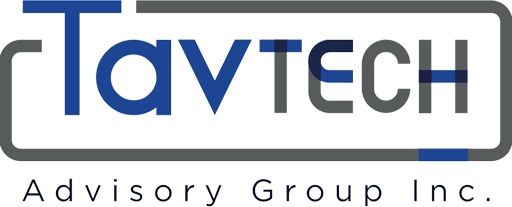Smart Urban Planning Interface
Shaping the Future of Sustainable Cities: Innovative Urban Planning for Resilient Communities
Revolutionizing Urban Development
The Smart Urban Planning Interface is an advanced technological platform designed to transform the way cities are planned, developed, and managed. By integrating cutting-edge algorithms, data analytics, and Geographic Information Systems (GIS), this platform enables city planners, architects, and government officials to make informed decisions that shape the future of urban landscapes.
The platform gathers and analyzes real-time data from multiple sources, including environmental sensors, population growth statistics, transportation systems, and public utilities. It leverages predictive modeling powered by machine learning to forecast urban development needs, such as housing, infrastructure, and public amenities while considering the environmental impact.
The Smart Urban Planning Interface supports the creation of resilient, sustainable cities that meet current and future needs, ensuring a balanced approach to growth, environmental preservation, and community well-being.
Key Features
-
Traffic Management: Analyze current traffic patterns to optimize road layouts, reduce congestion, and enhance public transportation routes.
-
Environmental Monitoring: Access real-time data on air quality, noise pollution, and water management to ensure that developments align with sustainability standards.
-
Population Trends: Adapt urban plans to shifting demographics and population growth patterns, ensuring housing, amenities, and public services are always in alignment with community needs.
-
Weather Forecasting & Climate Impact: Incorporate weather and climate data to plan infrastructure that is resilient to extreme weather events and climate change impacts.
-
Energy Efficiency: Monitor energy consumption patterns to design energy-efficient buildings and public spaces that reduce overall carbon footprints.
-
This dynamic integration of real-time data allows for smarter decision-making, efficient resource allocation, and sustainable growth, ensuring that cities evolve in harmony with their residents and the environment.
-
Infrastructure Planning: Predict future infrastructure needs, such as transportation networks, energy demands, and public services, to ensure cities are well-prepared for growth.
-
Housing Development: Anticipate housing demand based on population growth, migration patterns, and economic trends, allowing for the efficient allocation of residential areas and amenities.
-
Sustainability Planning: Forecast the environmental impact of urban development projects, helping cities minimize carbon footprints, manage resources, and meet sustainability goals.
-
Disaster Preparedness: Use predictive models to assess risk factors for floods, heatwaves, or other natural disasters, ensuring urban areas are designed to withstand and recover from such events.
-
Public Health & Safety: Predict health and safety concerns based on urban layouts and population density, allowing planners to design safer, healthier communities.
-
Interactive Visualizations: Stakeholders can explore dynamic, 3D models and visual representations of proposed developments, allowing them to better understand the impact on the environment, infrastructure, and community.
-
Real-Time Collaboration: The platform enables real-time collaboration, allowing urban planners, developers, and decision-makers to work together remotely. This feature accelerates project timelines and ensures everyone’s input is incorporated efficiently.
-
Community Feedback Integration: Public forums and feedback tools allow residents and community groups to review plans, offer suggestions, and raise concerns, ensuring that urban development aligns with the needs and desires of the population.
-
Scenario Simulation: Planners can create multiple development scenarios, allowing stakeholders to visualize the outcomes of various urban planning decisions. This helps in comparing alternatives and making data-driven choices.
-
Document Sharing & Version Control: Securely share documents, plans, and reports with all involved parties. Version control ensures that everyone is on the same page and working with the latest information.
-
Regulatory Alignment: The platform helps local governments and regulatory bodies review and approve plans, ensuring that developments meet zoning, environmental, and legal requirements.
How Our Platform Works?
The platform gathers real-time data from multiple sources, including:
- Sensors (traffic, air quality, noise pollution)
- Satellite Imagery for topographical and environmental data
- Government Databases (population growth, land use regulations)
- Weather Forecasting Systems for climate and disaster risk analysis
All this data is centralized into the platform, providing a comprehensive view of the urban landscape.
sing the collected data, urban planners and stakeholders can create multiple urban development scenarios, incorporating factors like:
- Infrastructure and transportation systems
- Housing needs and public amenities
- Environmental sustainability goals
- Energy consumption and grid integration
The platform uses predictive modeling to forecast outcomes for each scenario, offering insights into future needs, environmental impact, and cost implications.
Stakeholders—including government officials, architects, urban planners, and community members—can review and discuss these scenarios. The platform’s interactive visualizations and real-time collaboration tools enable:
- 3D Urban Models: View proposed developments from all angles.
- Scenario Comparisons: Compare different planning outcomes to make informed decisions.
- Community Feedback Tools: Engage the public and integrate their input.
The platform provides smart recommendations based on data analysis and predictive models. These recommendations guide decision-making by optimizing for:
- Sustainability (minimizing environmental impact)
- Efficiency (reducing costs and timelines)
- Resilience (preparing for future growth and challenges)
Once plans are finalized and approved, the platform continues to support the project by:
- Automating Resource Management: Track construction progress and resource allocation.
- Real-Time Monitoring: Use sensors and satellite imagery to monitor the environmental impact, energy use, and infrastructure development.
- Adaptive Planning: The platform allows for adjustments during implementation to address unforeseen challenges or changes in real-time.
- Sustainability (minimizing environmental impact)
- Efficiency (reducing costs and timelines)
- Resilience (preparing for future growth and challenges)
Benefits of Using Our Interface
It supports initiatives for tree planting and afforestation to improve air quality and provide natural habitats.
It reduces urban heat islands through increased vegetation and green infrastructure, contributing to better air quality and lower temperatures.
It enables scenario analysis to explore various planning strategies, ensuring the best solutions are identified and implemented.
It supports smart grid technology integration, improving the reliability and efficiency of energy distribution.
It designs infrastructure that can withstand extreme weather events, ensuring long-term safety and sustainability.
It minimizes future expenditures related to environmental remediation and infrastructure repairs by proactively addressing potential issues.




Stay In Touch